It is courageous to make predictions in public, especially in writing. Most of us sit on the sidelines and criticize privately or just shrug our shoulders and say, “Who knows how things will go?” Not Gray Martin.
During the 1980’s and 90’s, Gray worked as a botany research technician with the University of California’s avocado breeding program under the direction of Bob Bergh. This era of the program discovered (“invented”) numerous avocado varieties, including Lamb, Sir-Prize, GEM, and Luna.
Gray’s role in the program included recording observations on thousands of avocado seedlings and their fruit, and grafting to further test varieties that looked promising. He came to know avocado trees, avocado fruit, and avocado propagation at the expert level.
In the 2000’s, Gray switched crops and became a dragon fruit farmer and breeder. For the last few decades, Gray’s focus has been on dragon fruit and it remains there today, except that he has also found himself partly pulled back into the world of avocados.
“Eight Predictions” has always been one of my favorite articles on avocados. It is one that Gray wrote for the 1996 Yearbook of the California Avocado Society. Through the years, I would periodically reread it and reassess its accuracy. Then I got to know Gray. And then I got an idea: Why don’t I ask Gray to revisit his predictions and assess his own accuracy?
Gray agreed.
And that’s my introduction. Here I let Gray take over this post:
by Gray Martin
Greg Alder and I are both avo-enthusiasts. In one of our lengthy conversations, his questions reminded me of something I wrote some 29 years ago entitled “Eight Predictions”. As Greg is keen to do, he researched the topic and asked if I would make an updated analysis. Before I do, for those younger than 50, I must remind you that in 1996, when I wrote this article, personal computers were completely new. There were cell phones and no internet. I bought my first PC in the mid-90s as a “future” tool to help my young son, then four—apparently thinking ahead as farmers are apt to do! At that time, I had a regular column for the California Avocado Society Quarterly called ‘GEM’s Pearls’, and I emphasized basic horticultural principles for topics like pruning, grafting, tree training, and the like.
My 1996 predictions are in bold; my responses follow in regular font.
(1996 prediction) 1. ‘Lamb/Hass’ will soon be commercially accepted and requested by avocado handlers as “late-season” ‘Hass’. (I have never eaten a rancid tasting ‘Lamb/Hass’, whereas ‘Hass’ is generally over-mature for me in the “southern” region by July.)
(2025 response) 1. It was recently reported to me last year that Spain and Portugal are planting Lamb/Hass in the 100’s of thousands! The tree is stalwart, with thick, large, dark-green leaves, and a dense protective canopy for inside fruit. The tree is remarkably resistant to stress, pests, and wind—a heavy producer of larger than Hass fruit, in a complimentary later season to Hass. If not managed, it will alternate bear. Also, it can be prone to an “off-season” set that does not correlate to the industry-determined release dates. This off-season fruit will then result in fruit-drop as growers await mandatory harvest schedules. Like so many problems the California industry faces, this is an example of self-infliction. There are cultural methods to alleviate “off-bloom” (off-season) and alternate bearing. Lamb/Hass had a window of opportunity for the industry, especially before the entry of Mexican fruit, but lost the early momentum in California, mostly due to handler’s/packer’s preference to “Universal” Hass. The market has now mostly accepted small quantities of Lamb fruit as “Large Hass”. I believe the advantages of large “late” season fruit produced on a highly stress-resistant precocious tree can have a place in future California groves.
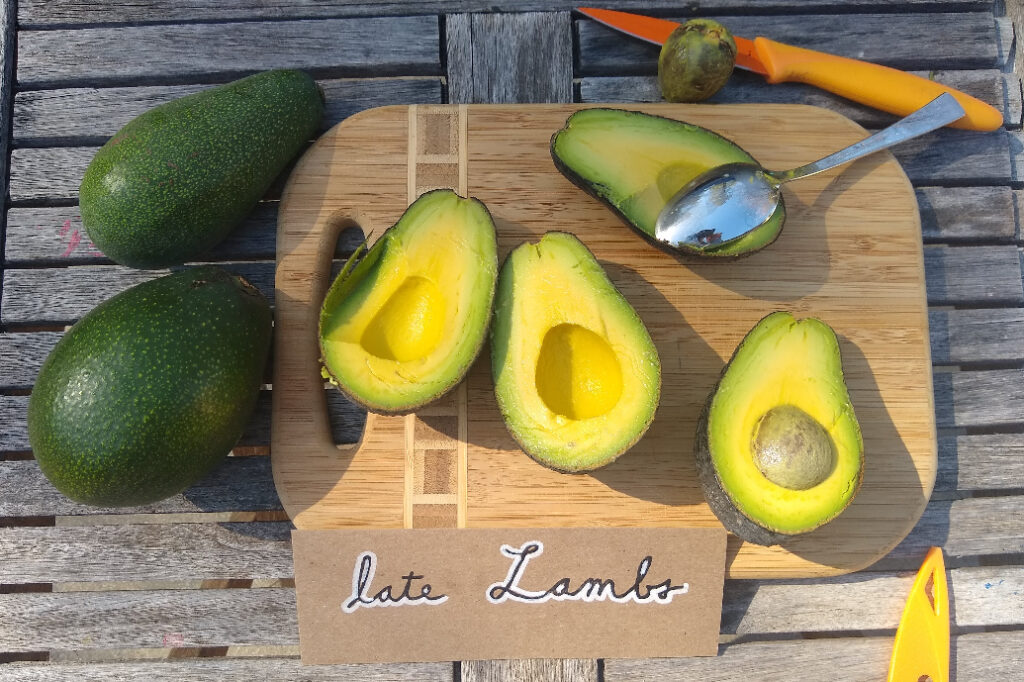
2. Tree training will become more widely used, especially the central—leader.
2. Why couldn’t the topic of tree training be number 8? I have just returned from Ecuador visiting Dragon Fruit farms where I told my son the difference between the Ecuadorian farmers and the California farmer is that horticulture seems naturally instinctive in “southern” agronomic countries! In Ecuador, it didn’t take my poor Spanish much translation to share my horticulture perspectives! This can be illustrated with a review of central-leader tree training–the basics of avocado tree architecture. I would argue that all California nurseries provide trees counter-productive to the inherent genetic design of both the avocado species and their varying varieties. I understand we are all prone to follow tradition, and as the California avocado industry evolved alongside the citrus industry both species were more or less patterned together as “subtropical” trees. But, the two species grow differently, one is terminal dominant, regenerative, generally upright, and weakened by early pruning, and the other is more adaptive. Yet they are both grown the same. I have written on this extensively, sadly without publication.
3. High-density plantings will be shown to be commercially viable and more profitable than traditional spacing.
3. High-density plantings may be my greatest “hit”. Long before Chileans were hired to advise California on closer tree spacing, I was attempting to devise different ways to stimulate a single upright shoot (central leader) to the young tree, resulting in narrower patterned tree architecture, hence closer spacing. What I failed to realize in 1996 was that avocado cultivars exist in two distinct classes: Precocious and Non-precocious. The secret to high density lies in using precocious varieties! Hass and Fuerte, the two industry standards are both non-precocious, hence all our experience training, spacing and pruning were learned from this vigorous growing class, and therefore do not apply to the “new” precocious, often high-yielding class!
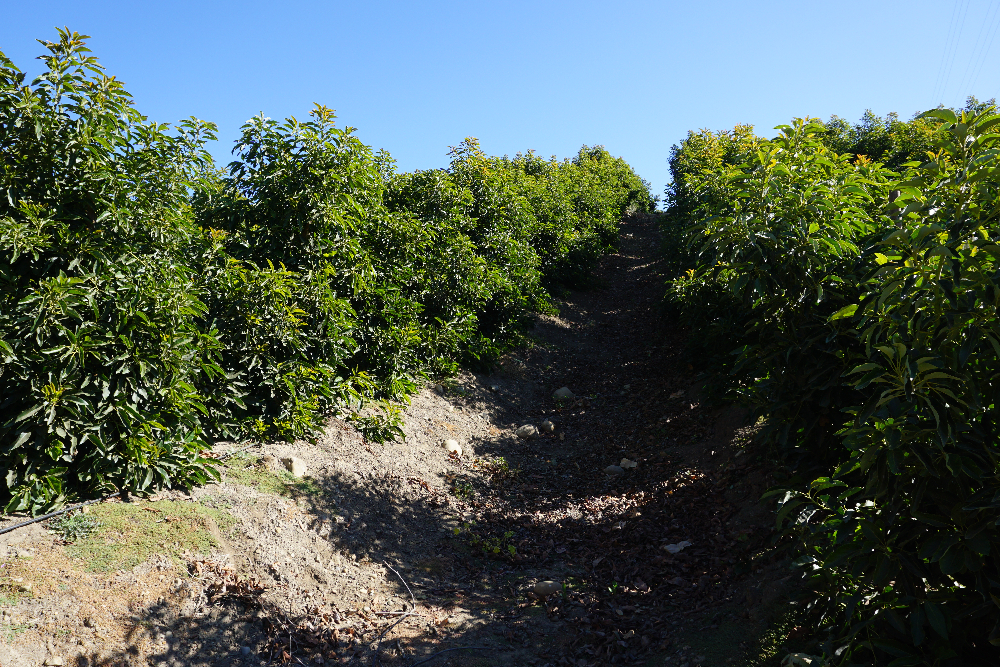
4. Seedling rootstocks will make their way back into the nurseries and fields, particularly those of the Guatemalan race and its hybrids that are well adapted to our growing regions and are more salt resistant than existing Mexican race rootstocks.
4. Apparently, my suggestion to move away from ONLY Mexican race rootstock was moved up a notch with the introduction of West Indian rootstocks to California, mostly developed by Israeli researchers/growers as a means to combat their highly saline conditions. I have limited rootstock experience, but from a strictly horticultural perspective, one can’t ignore the fact that W.I. roots don’t like cold soils – like those existing in non-coastal California. West Indian avocados are after all a tropical race species. I still feel the Guatemalan race was overlooked as a seedling rootstock for California. In regions outside California, the use of Hass seedlings is becoming popular as alternative seed material is simply not available.
5. Root rot will become less and less of a problem as the very sensitive ‘Topa Topa’ seedling rootstocks that were planted in the tens of thousands many years ago are replaced or abandoned. Additionally, a combination package including pruning, water reduction, and organic mulches (maybe new biologicals?) should relieve most major damage.
5. I’ll take a break-even score for this one. Remember this was long before most root-rot resistant clonals were in play. If I recall correctly Duke 7, Duke 9, and Toro Canyon were the clonal standards. Richard Morrocco was the lead person in California for the use of Phosphite injection. His promotion and success with injection spurred further fungicidal advances. After seeing an avocado tree photo with more than 20 syringes, I leaned toward a more “organic” approach using Ag mulch that cost only $2.25/yard delivered! In time my experience concluded that organics is remedial, but only when the susceptibility of the rootstock is not high. Therefore, rootstock choice is an important factor regarding either chemical or biological treatment.
6. Pollen-donor varieties (B-flower) like ‘BL667’ (Nobel) and ‘BL516’ (Marvel) will be shown to be valuable as production enhancers for ‘Hass’ and ‘Lamb/Hass’.
6. The recent release of ‘Luna’, or the BL516 ‘Marvel’ (yes, it was developed more than 30 years ago!) should provide me with one full point of accuracy here. Alas, when you examine the actual research done after I left UC (please google the UC patent) you will discover that there is nothing in the data to suggest a pollinizer benefit! There is so much room for discussion on the topic of pollinizer importance. My current thoughts are that some varieties, like Hass, are more tolerant of self-fertility than other varieties like GEM. Especially during climate years less than ideal for pollination (bee behavior, competitive pollen sources, less than optimal temps, etc.).
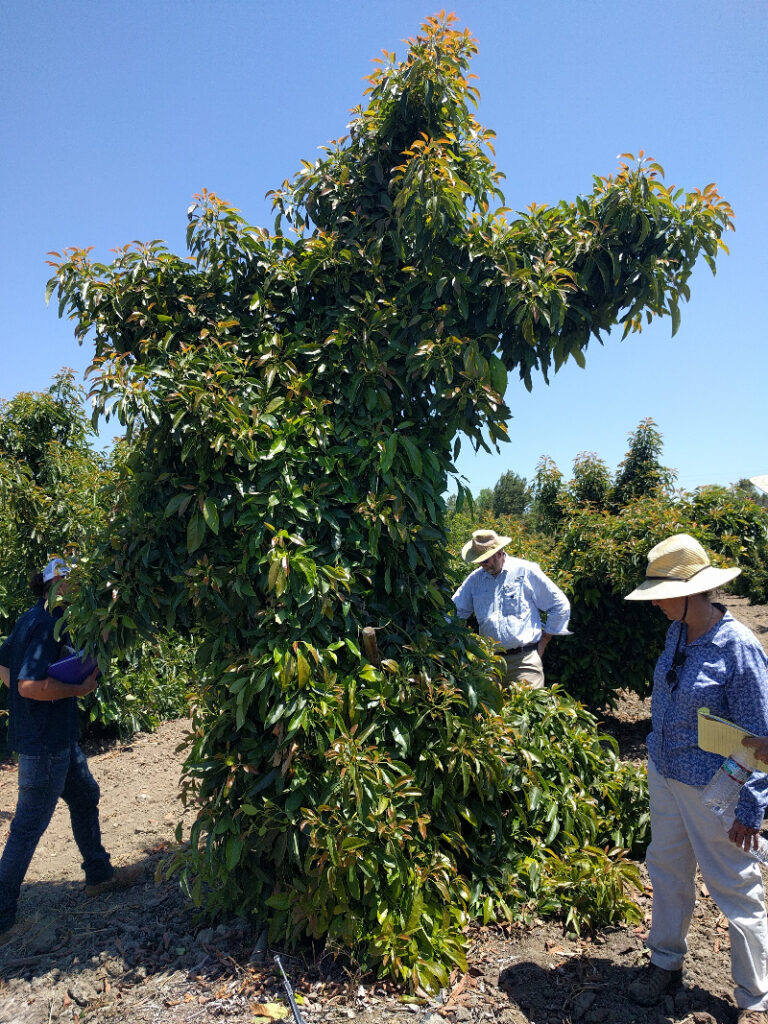
7. New “Hass-like” varieties will prove equally as promising as ‘Lamb/Hass’. ‘Harvest’ is a “Hass-look-alike” that also has superior postharvest qualities compared to ‘Hass’.
Additionally, production exceeds that of ‘Hass’. (Handlers, you should be requesting more of this fruit.) Others, like ‘GEM’, are excellent quality avocados that most consumers would prefer to ‘Hass’. For growers, it is a healthy, vigorous, productive tree.
7. Did I say ‘GEM’? Did I say ‘GEM’ in 1996? Hmmm. Give the kid another point!
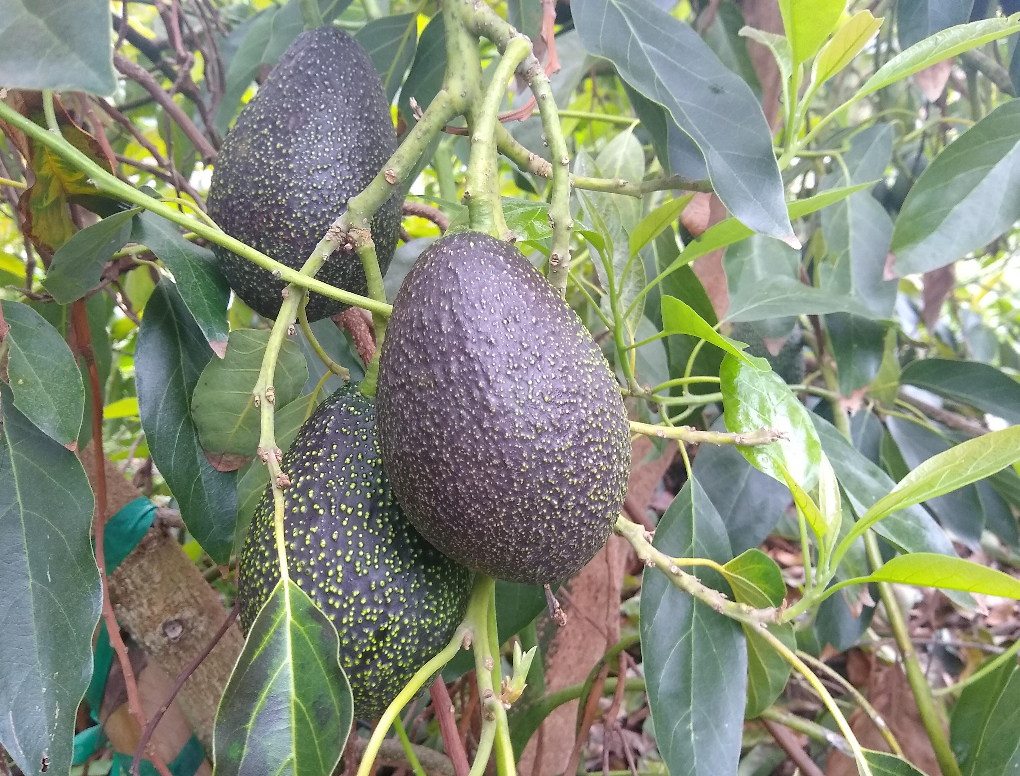
8. Avocado production in California has at least 15 more good years, and is more likely to succumb to urban pressures than to foreign intrusion.
8. 15 + 1996 = 2011. Imports are clearly the Doomed-Day card for California avocados. When did that begin? A little more than a decade ago? 2025 – 2011 = 14. I’ll let you score this one.
In conclusion: No not an eight scorecard, but likely more than a six.
One more “Prediction”: You will only have a chance at winning in California Ag when you learn your crop as well as you learn your children; with patience and study. If you seek advice from long-term farmers, your odds of success will be improved!
Thank you, Gray!
This is Greg writing now. I’d like to connect you to some of my posts that touch on the topics of each prediction:
1. “The Lamb/Hass avocado tree: a profile”
“How late can Lamb avocados hang?”
“What’s a Jumbo Hass avocado?”
4. “Avocado rootstocks: what do they matter?”
5. “Interview with John Schoustra”
6. “What are the best avocado pollination conditions?”
7. “The GEM avocado tree: a profile”
Also, see these other excellent articles authored or co-authored by Gray Martin:
Finally, I have made a playlist of YouTube videos that Gray made on grafting here.
Read the original 1996 California Avocado Society Yearbook article, “Eight Predictions” by Gray Martin, on AvocadoSource.
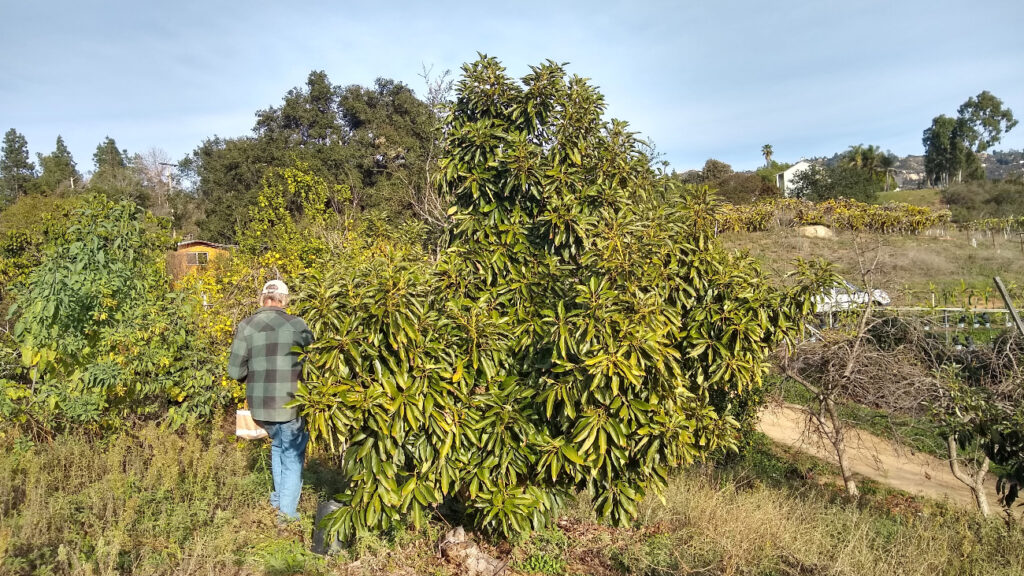
Thanks for your support of my Yard Posts so they are ad-free for all to enjoy.
All Yard Posts are listed HERE

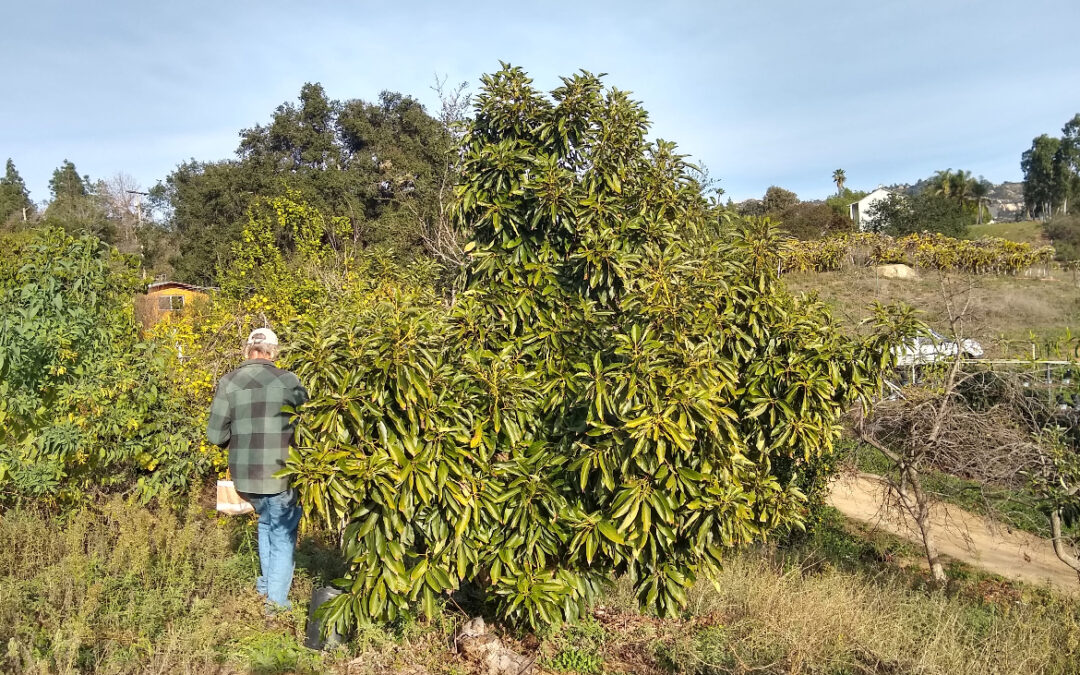
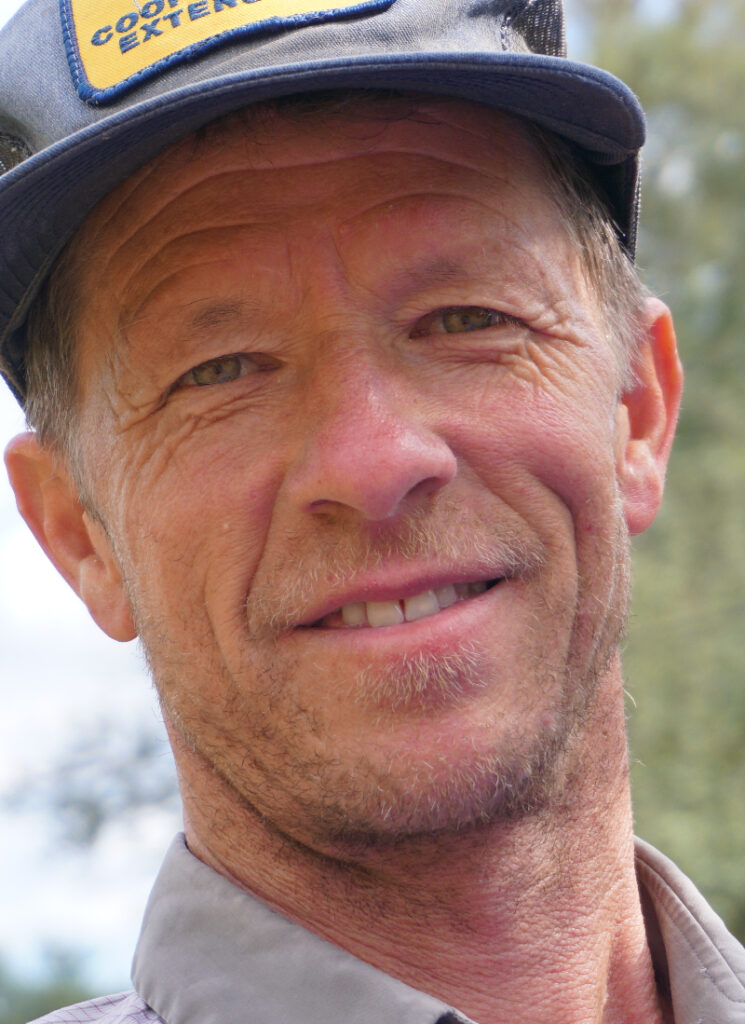

Fantastic! What a great (and brave) comparison of predictions and outcomes. Grave-o-Damus did alright. 🙂 I would love to hear more about topic #2.
Hi Randy,
Gray goes in depth on this topic in “Avocado Tree Structuring” from 1991.
Thanks, Greg! I noticed that you had referenced it and read the article.
BTW Gray’s series on grafting makes it all clear. https://www.youtube.com/watch?v=DnXbsEMX6YE&list=PLqVkN9UiHkShB1HypLaWE3355uTW4-3dt
Yes, and I’ll add that ever since I tried Gray’s suggestion of only allowing a single bud to grow out of a graft, I will never do it any other way. The results are as Gray describes and very satisfactory. It makes a more upright and symmetrical tree that needs less pruning/shaping down the line.
The avocado trees I ordered from Four Winds (an outlet you mentioned) are very much single leader, likely at least in part for their mail order packaging, which is excellent.
Hi Greg!
I have an avocado tree in my backyard and would love some help identifying it!